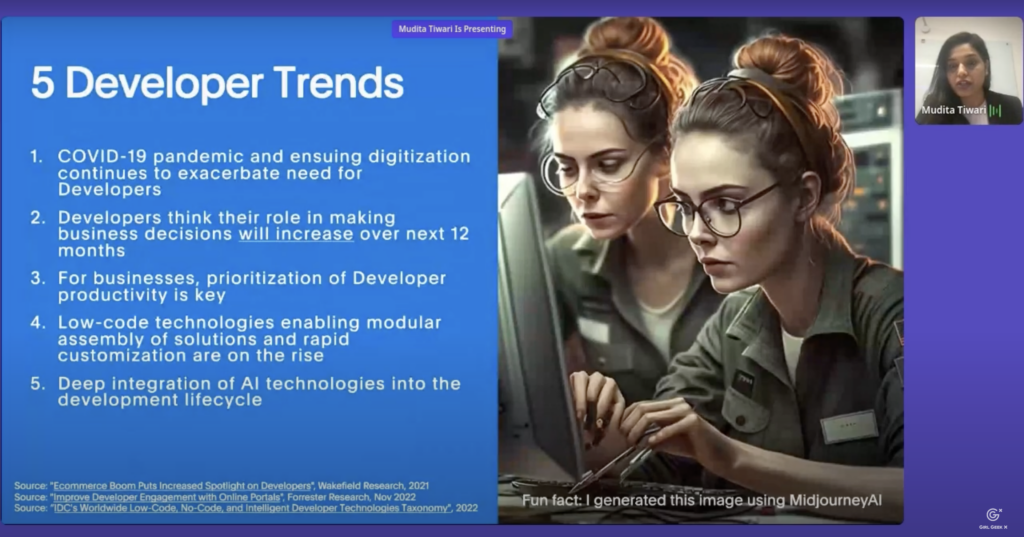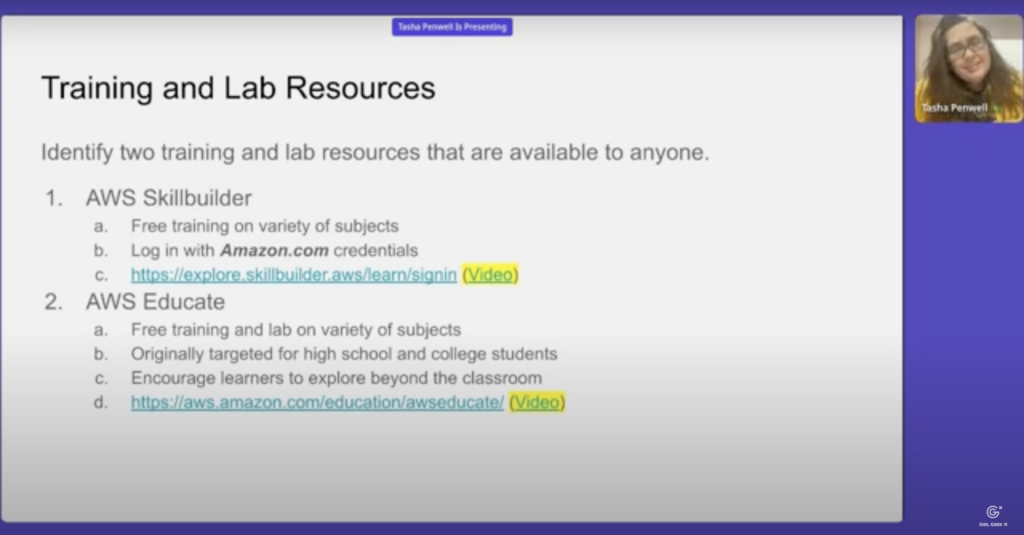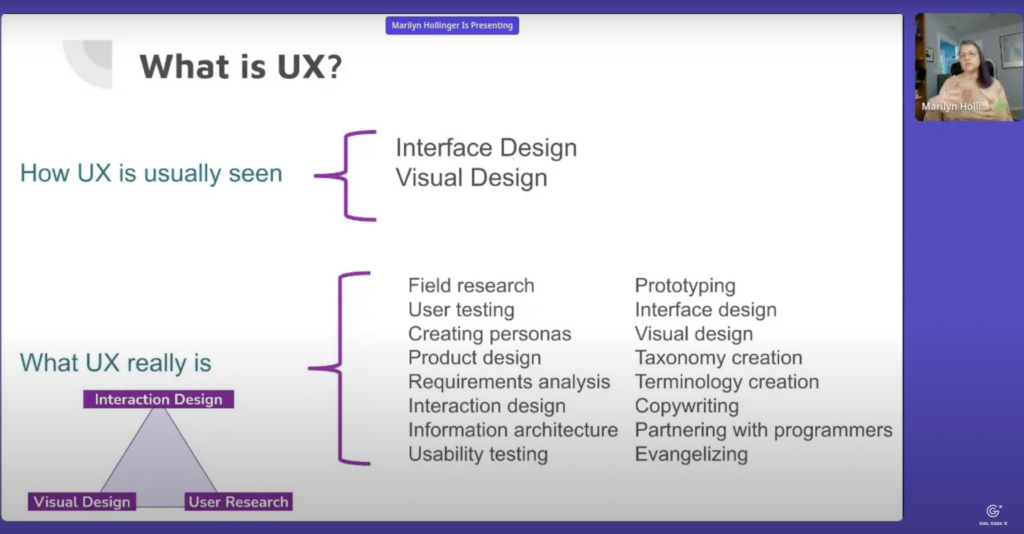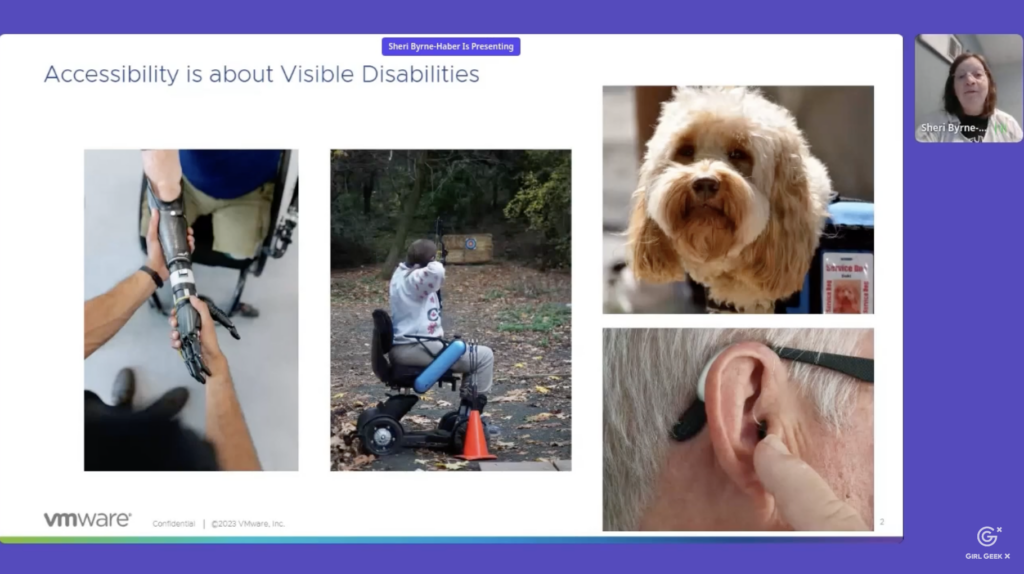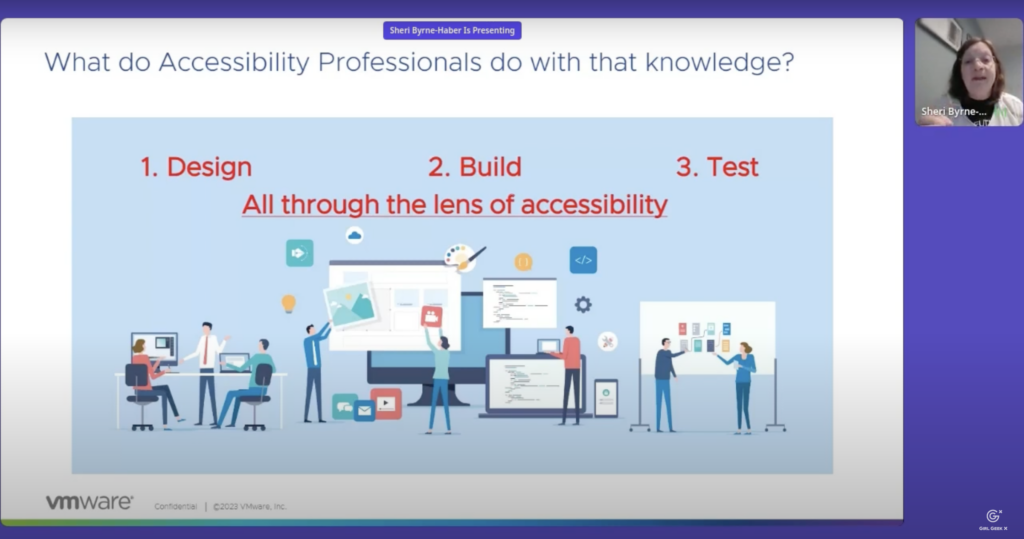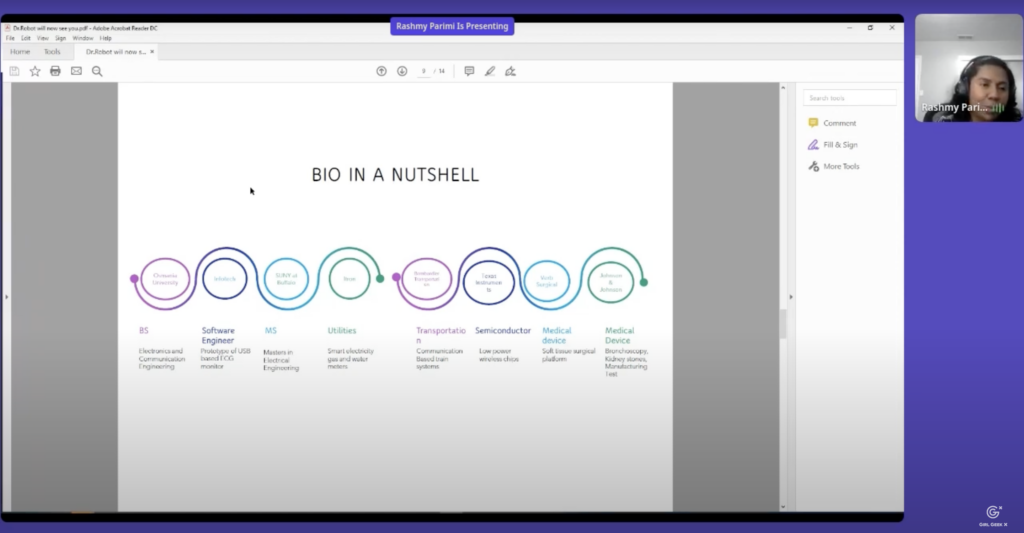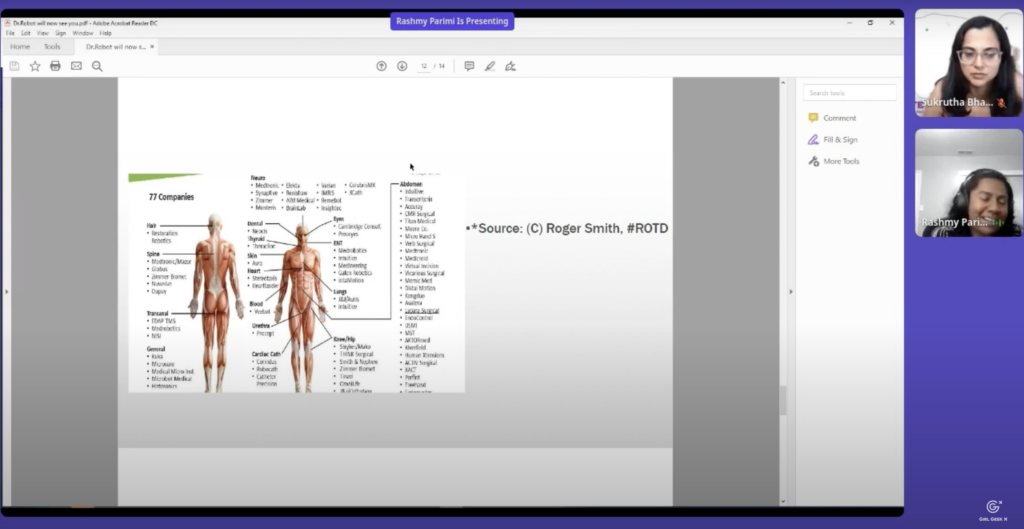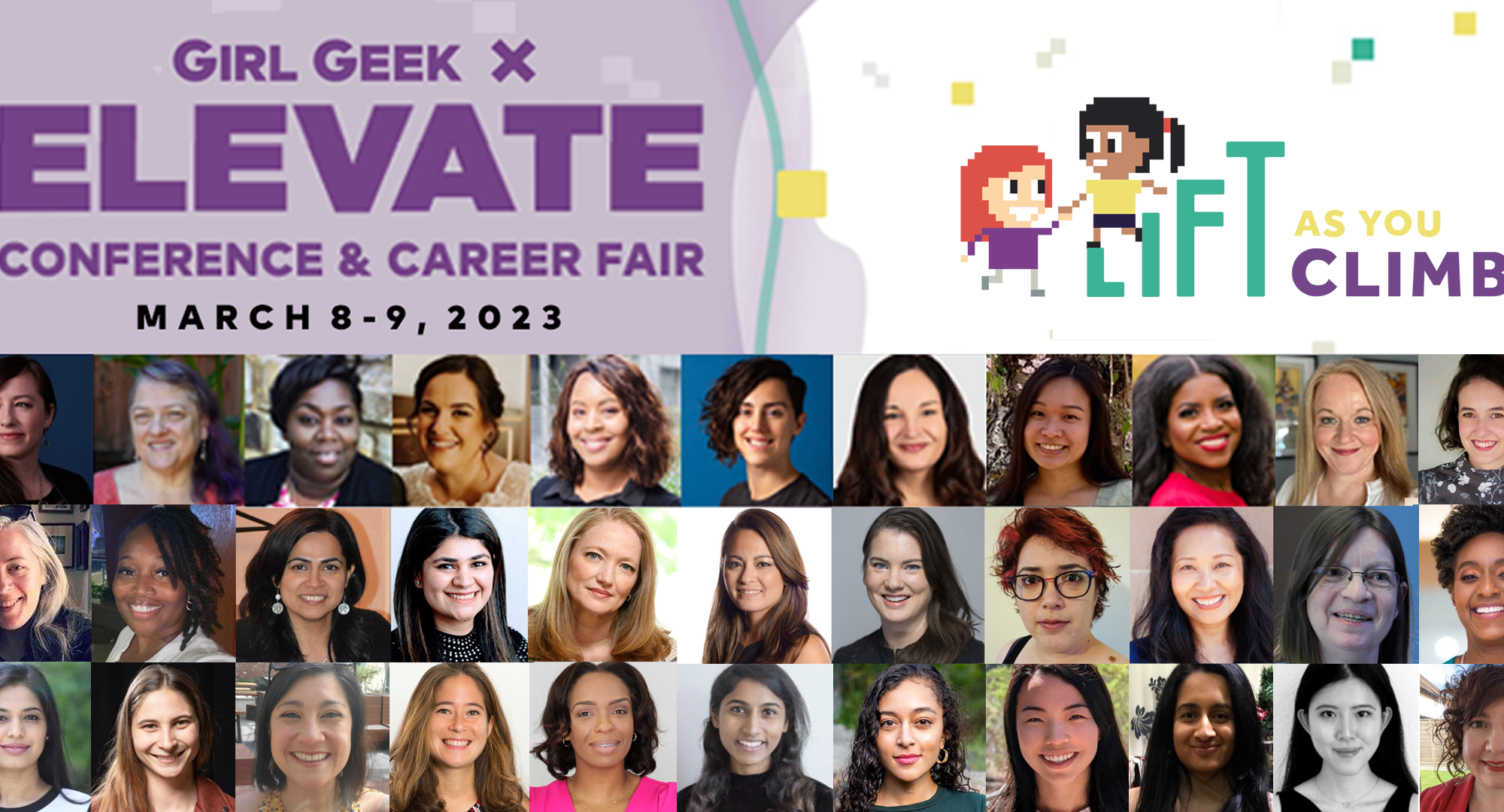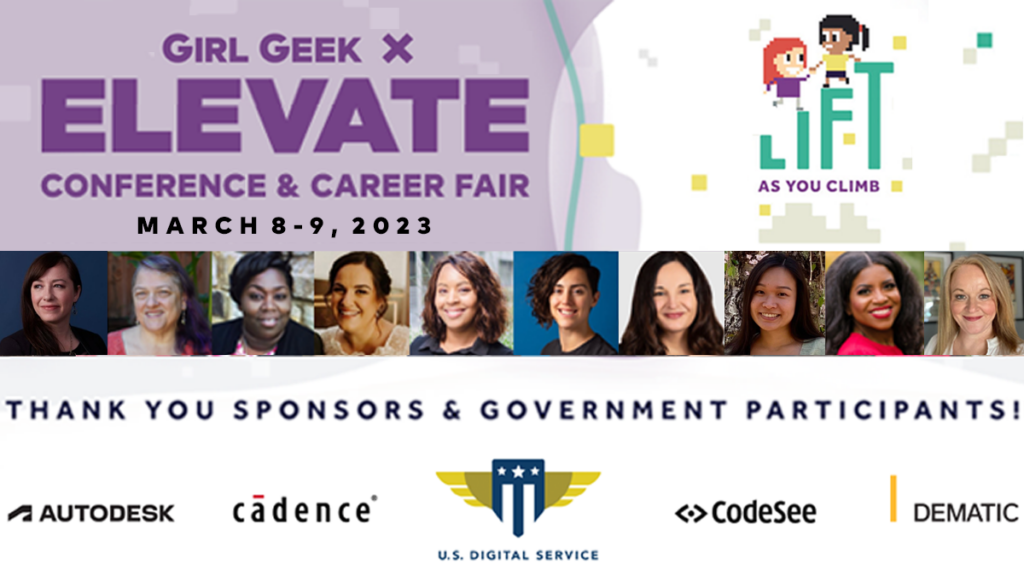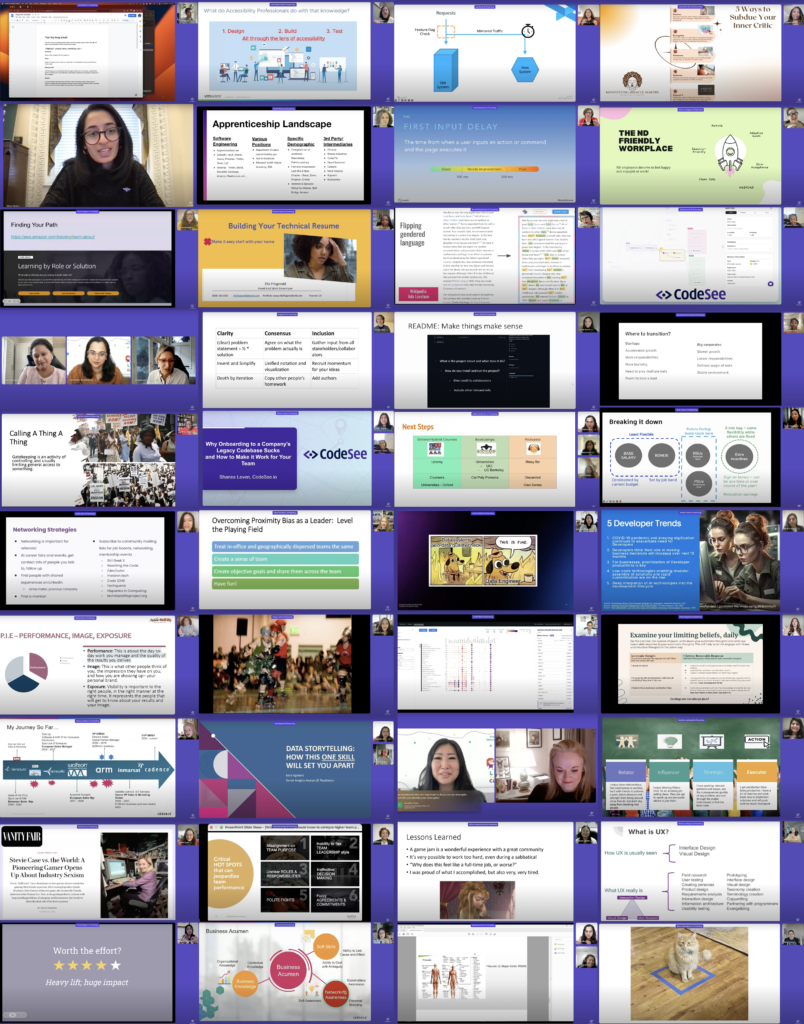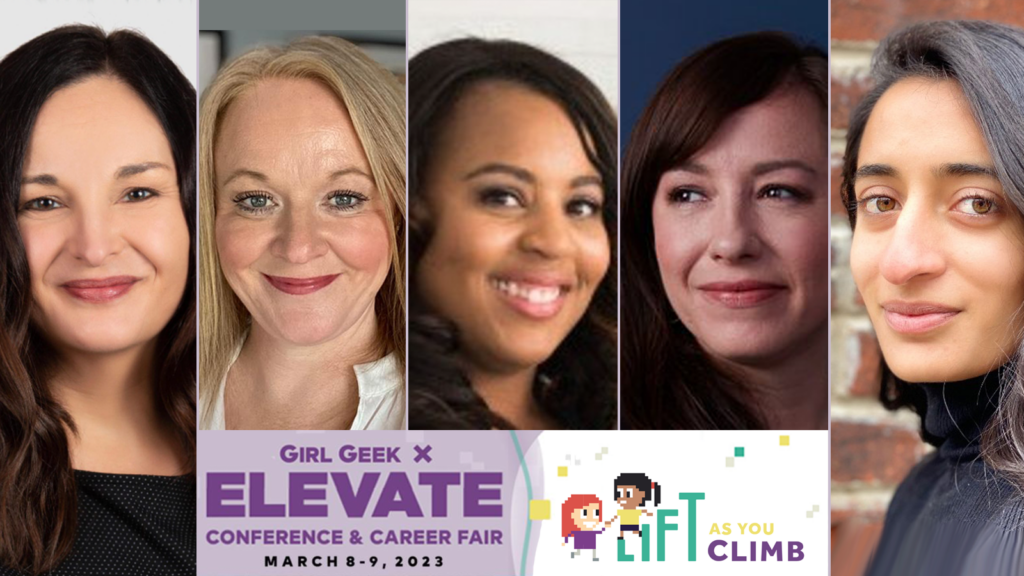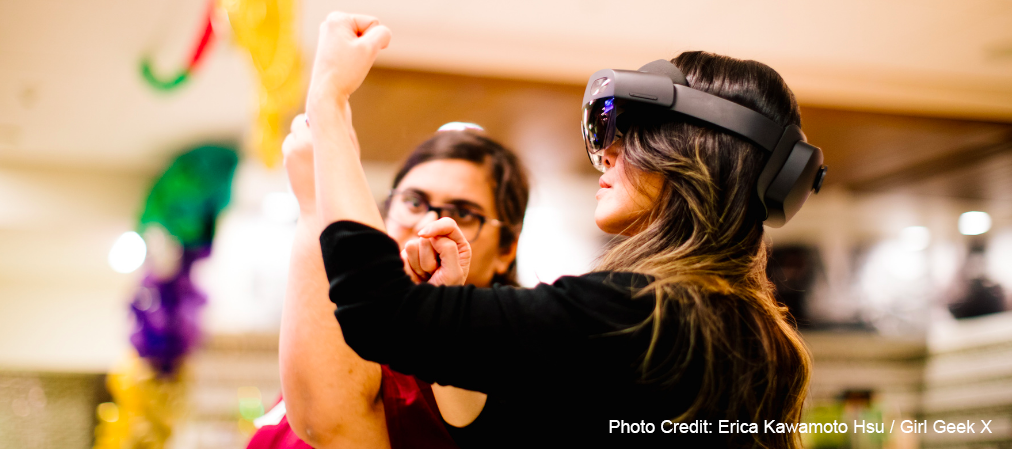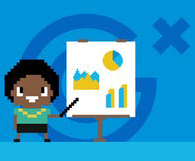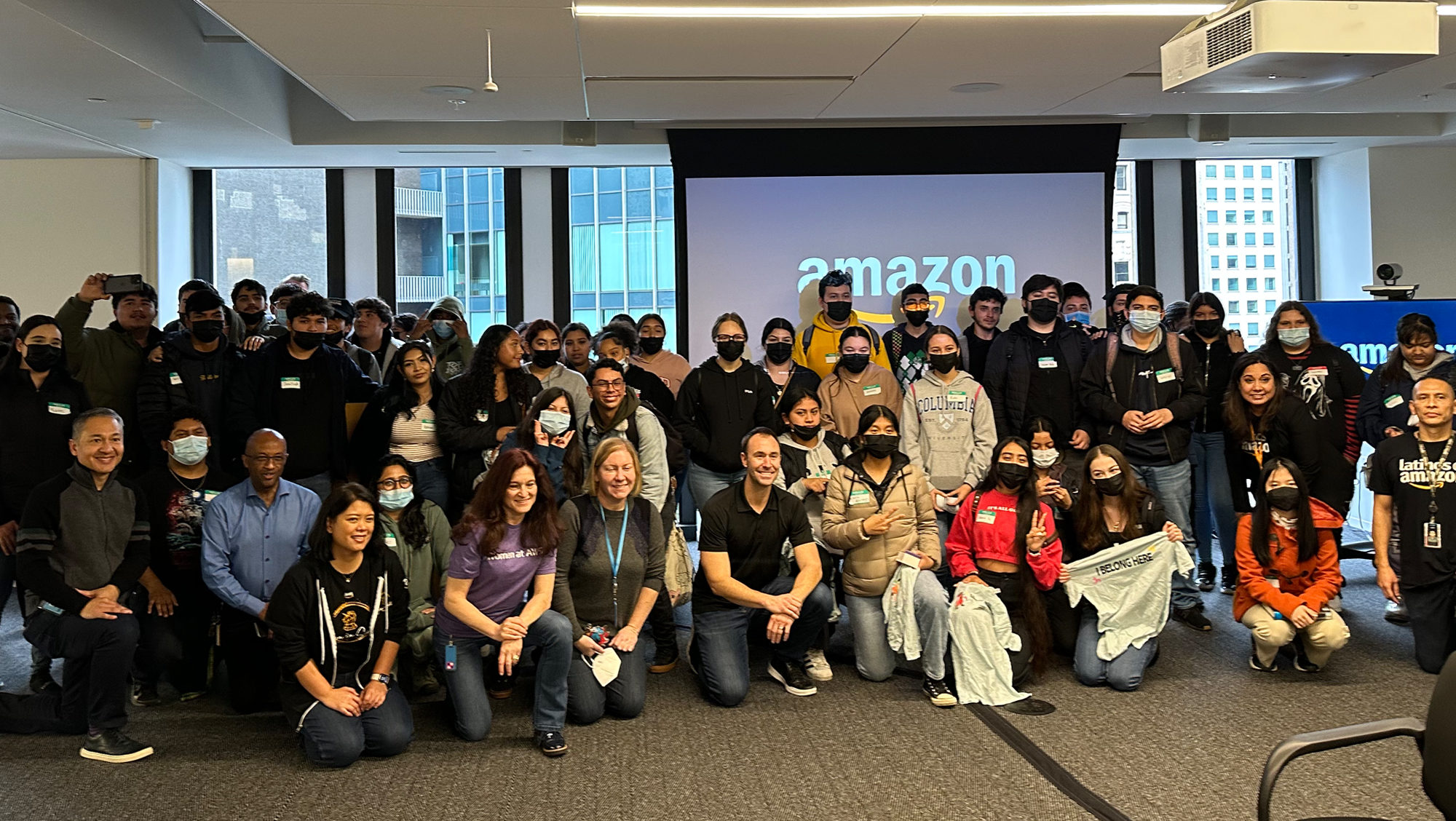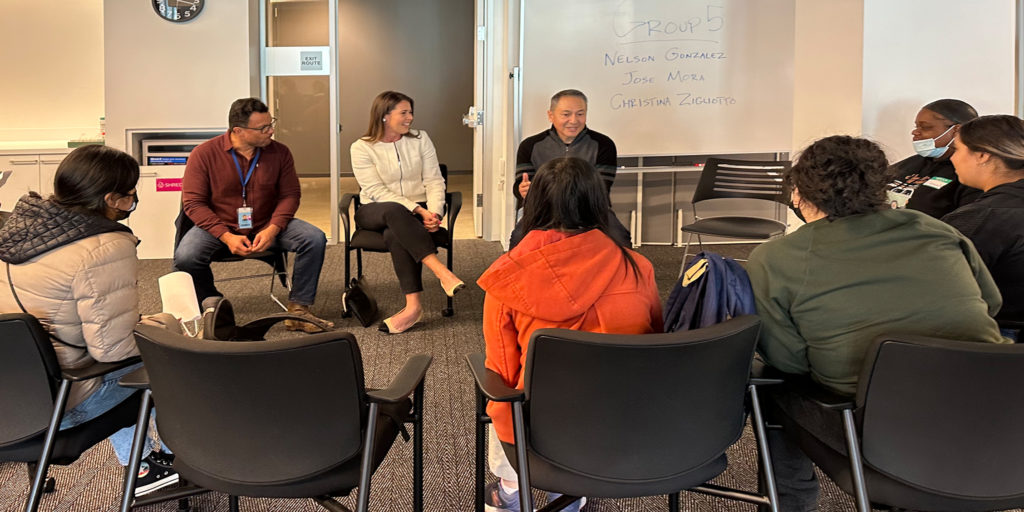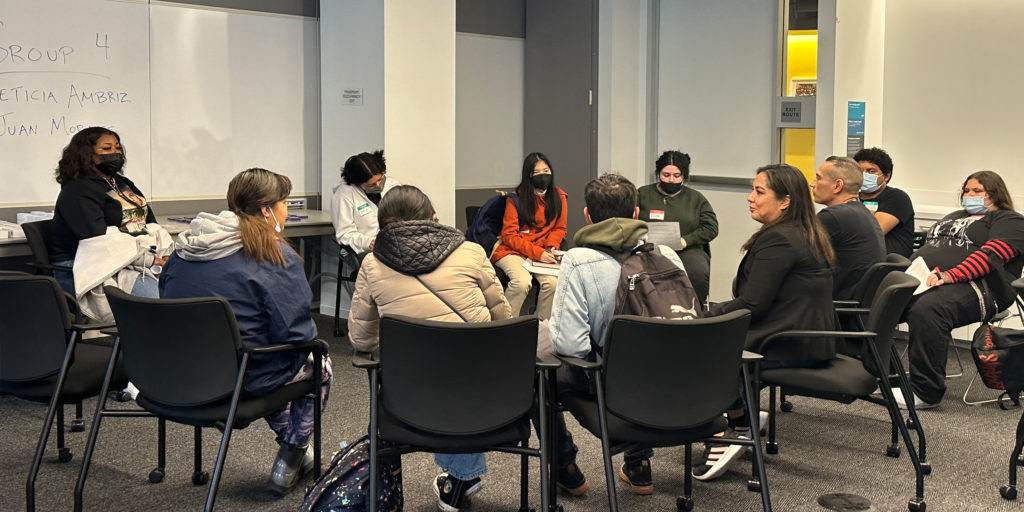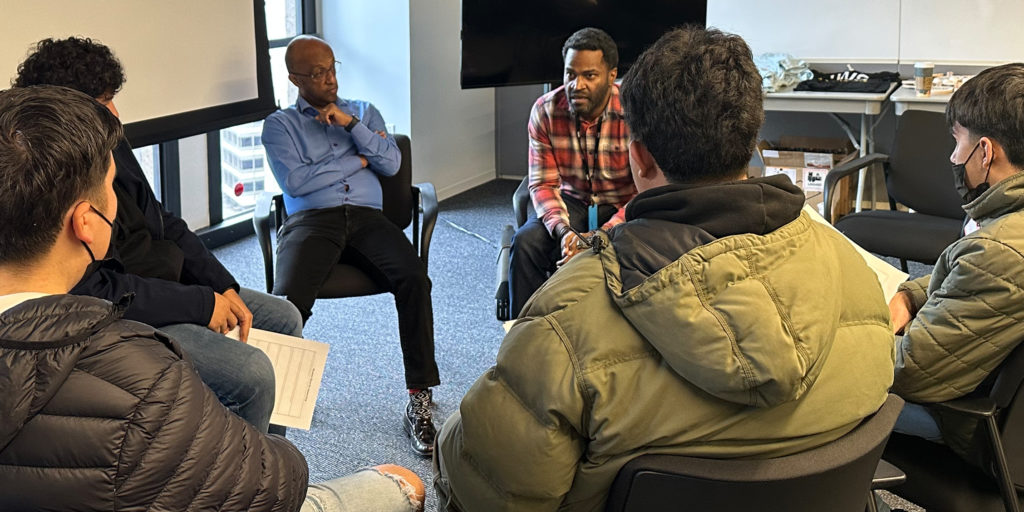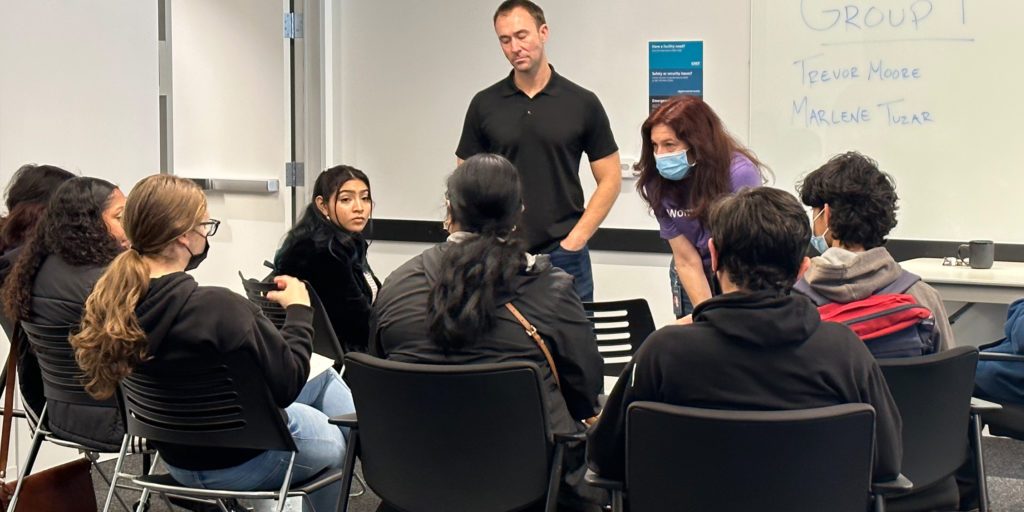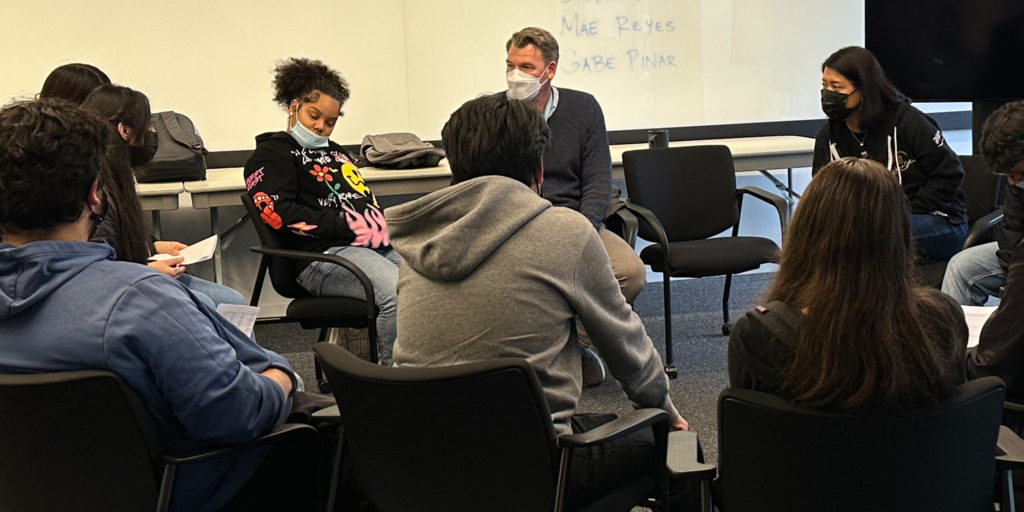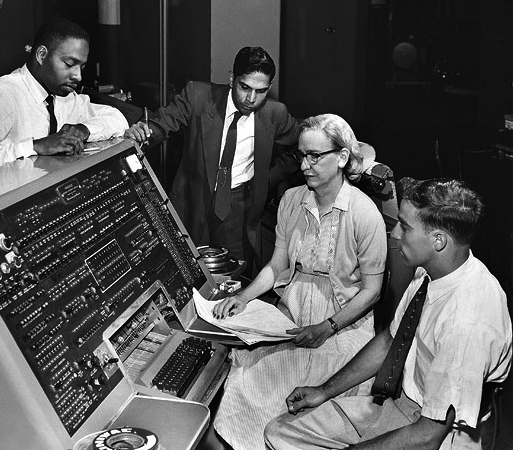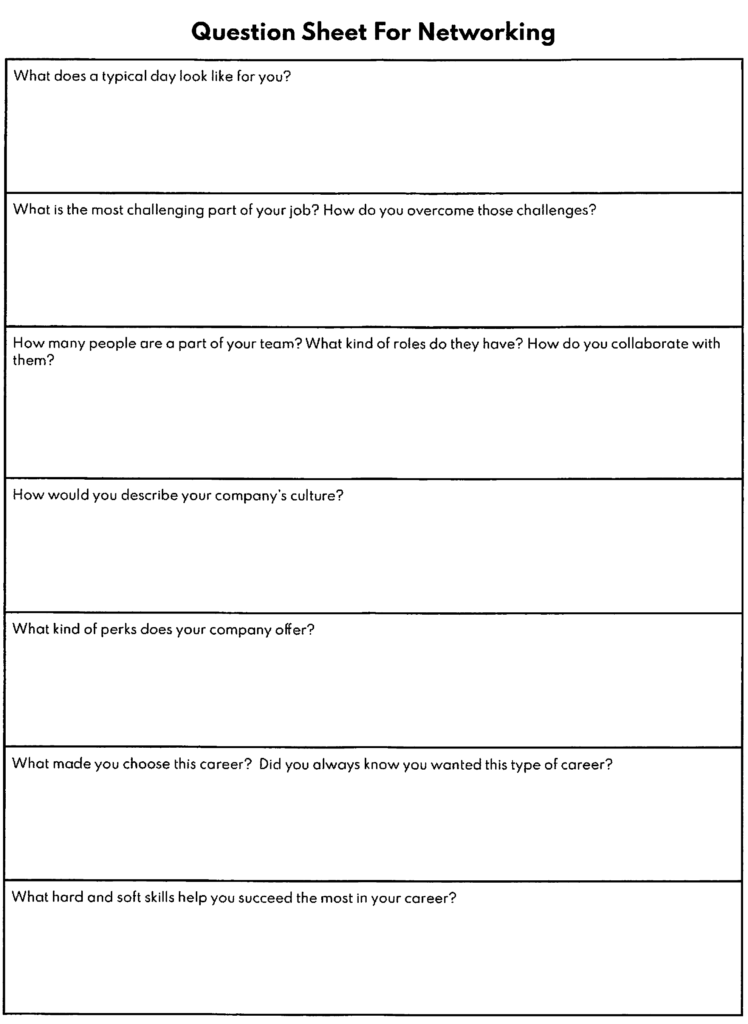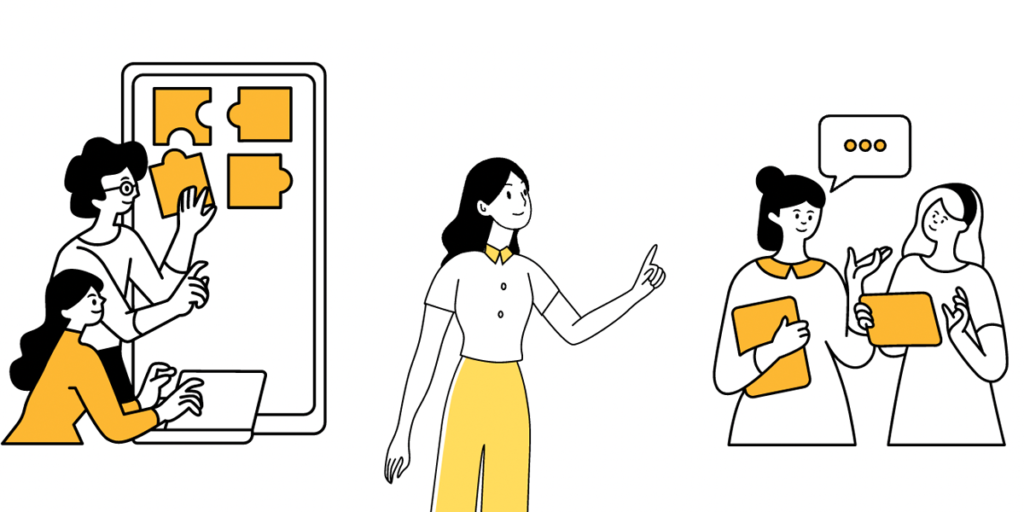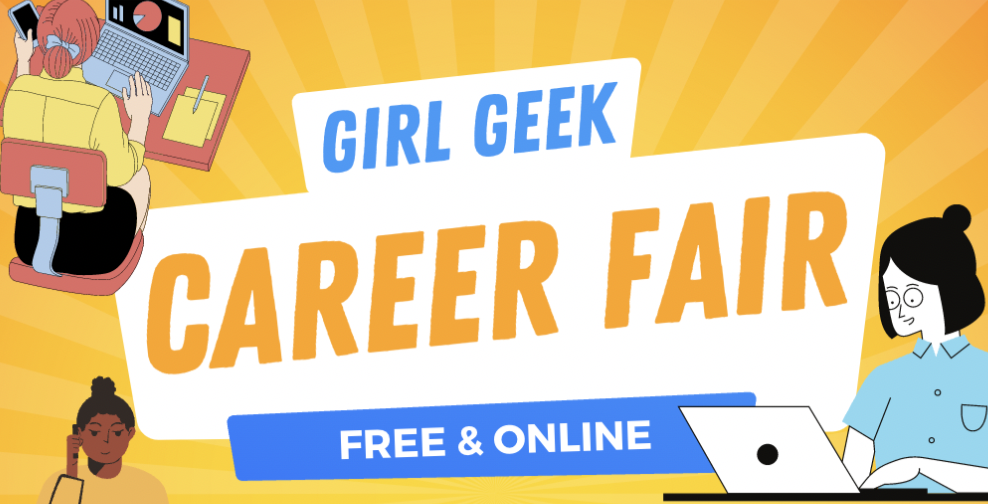Like what you see here? Our mission-aligned Girl Geek X partners are hiring!
- Check out open jobs at our trusted partner companies.
- Watch all ELEVATE 2023 conference video replays!
- Does your company want to sponsor a Girl Geek Dinner? Talk to us!
Angie Chang: We have our keynote speaker, Elena Ringseis, who will be talking to us about design ops, and she’s a leader in the field, and I’m gonna just hand her the mic so she can tell us all about it. Welcome, Elena.
Elena Ringseis: Hi, everybody. My name is Elena Ringseis, and I’m happy to share that it is my very first time speaking at a conference right now, so I’m super excited. And I’m also really grateful to all of you for being here, so hopefully you can see my slides. I wanna today I’m gonna talk about creating a strong team culture in a hybrid environment. But before I start, I wanna say a little bit about what I do. It’s design operations. It’s program management for UX design and research. And it’s really focused on creating process and systems that allow designers and researchers to focus on their work and not worry about how to, how to get things done, or how to get from point A to point B. And today I’m gonna share five examples of building community on a team.
Elena Ringseis: The point is for you guys to steal these ideas and use them on your own teams. To that end, I’ve, I’ve created a five star rating system, and at the end of each little story I give, give my take on whether it was worth, whether the impact it had was worth the effort that it took. Look for that at the end of each, at the end of each little section. Let me start with some context. At the end, towards the end of 2021, my org was facing similar challenges to probably what a lot of you were facing on your teams, which was that we had been a distributed team then we were fully remote, and then now we were navigating how to be hybrid. And all of the nuances that that entailed. There had also been lots of changes in leadership at our org level and at the company level.

Elena Ringseis: We also had a variety of types of relationships. Some of us had worked together in pre pandemic, some had joined during the remote years, so there was just a wide variety of how we, how we knew each other. We took our biannual company culture survey in October and then received our org scores. And what we found was that we were siloed and we, people were not feeling like their contributions were recognized or appreciated. We were just like it, 65 people. We weren’t a cohesive team. And this was especially true for folks who had been with the company for only one or two years, which maps back to 2020 and 2021, which were super hard <laugh>. The design ops team, which consisted of me, another program manager, and our manager, the director of design operations, decided to do a listening tour.
Elena Ringseis: And this was to give us more more of the why behind the scores. We have the scores, but we needed to understand what the sentiment was what what was behind those numbers so that we could make sure that what we were doing from an ops perspective was spent in the right areas. What did it look like? It was not complicated. Two and a half weeks. We intentionally invited people that had been with the org for one to two years, but we also made sure there was folks invited from a broad range of tenure. We used small groups and did six sessions. And an important piece here is that we did separate sessions for individual contributors and managers. We really wanted to create a space that was safe, that people could speak openly and, and blatantly if needed.
Elena Ringseis: We wanted to recognize that that can’t happen if your managers there. So, and for managers, they needed to just be with other managers because they have a unique place in the org and they need their own space as well. It was re really well received, and we even got feedback that just by having the listening tour, it made people feel better about being with the company and made them feel seen and heard. And so we hadn’t even done anything with the findings and we had already helped. That felt really good. Speaking of findings, our analysis found four different seams. How work gets done, how people grow, a sense of ownership of their work, and how people interact with each other. These four themes influence the operations roadmap for the year. But today I’m just gonna talk about the relationships theme.
Elena Ringseis: I created a couple of guiding principles for myself when thinking about like, what was I gonna be doing to focus on that relationship bucket build community across teams, celebrate great work already being done, and inspire new relationships. These were my objectives and guiding light through the year. Let’s look at this timeline. This is what the year looked like for the examples I’m gonna share today. We started the year with the listening tour in March. We awarded our first design award in April. I launched the Operations Digest in July. I launched the Shining Examples Library, and in September we had our first design party day. So let’s get started.
Elena Ringseis: Let’s start with the design award. This, this connects directly back to that listening tour theme of relationships. We heard that people needed to be recognized and appreciated. And so I created an award program that was fairly straightforward, a monthly award. Anyone can nominate anyone. It didn’t matter what role you played in the org. The recipient received the award at our monthly All hands and it celebrated our company values as well as a, a sixth value that we added ourselves, which is empathy. Empathy is what UX design and research bring to our products, and it’s also what that org brings to a company. We felt like it was really appropriate to celebrate empathy. The other piece of this is that anybody nominated got like a kudos email to their manager and their skip level managers and directors. It had the text of the nomination in it, that way there was like no question that we were providing visibility of what that person contributed.
Elena Ringseis: It was a success. We had 70% participation in the first nine months more at this point, it’s been going for a year over 131 nominations to date, 47 unique nominees, 11 average nominations a month. And we’ve awarded about $12,000 in cash bonuses to speak about that one point a little bit more. Initially, we offered like a very modest amount of money to donate to the charity of your choice, because it was something that we could do from our own budget. Within like two months, our VP was so impressed with the, with the award program that he shared it with hr, who also felt like it was like embodied what the company wanted folks to be doing. And we were leveled up to be able to offer a really significant cash, cash bonus, which just felt, felt great.
Elena Ringseis: We were so glad to be putting some weight behind recognizing people for what they were doing. It of course, increased visibility of individual contributions to leadership and to, you know, across their, their peers as well. It also gave us something to celebrate as a whole org. It really gave us tangible wins that we could be proud of, even if it was somebody that we didn’t work with day to day. And the last point is good vibes. It feels really good to write something genuine that you appreciate about your coworker. It feels good to read those things about yourself. It really shifted the morale and the general feeling of the team right away. Was it worth it? I’m gonna give it four stars because it was, it’s a medium effort. It’s ongoing recurs every month, so there’s logistics that need to be taken care of on a regular cadence, but it was a big impact.
Elena Ringseis: It really, really, again, like lifted up the vibe on the team Operations Digest. Let’s talk about this next. Initially incidentally, this one wasn’t even meant to address the relationship theme from the listening tour. Just felt like an easy way to keep people informed. But what I found was that it was a really important piece of the, of the puzzle for our team culture. What it was, was a twice weekly slack post to like our all design channel, and it highlighted stuff that was happening in our org and, you know, key company announcements and activities.
Elena Ringseis: I also launched a shared Google calendar so you could subscribe to the calendar and get everything on your calendar that was in the update. But what I found after a couple months was that it, it really again, contributed to that sense of belonging to something larger than your immediate team. It encouraged new connections, like people reacting or commenting on those posts, interacting with people that they don’t talk to each day. It brought, it brought visibility to what was going on in our org and to show that it’s more than just the meetings on your calendar.
Elena Ringseis: You are part of a vibrant organization and company where there’s a lot going on. You know, like all of the great programs that ERGs host wellness programs put on through, you know, our people partners. So really just bringing awareness to that life and vibrancy that was already there to help people feel like they were part of more than just their team. And then this one is my favorite. It amplified these extra activities that ICs were doing. So a lot of people were, for example, hosting a monthly gathering about data visualization or a deep dive into a certain product. And this is a time an individual is acting as an SME and taking leadership and, and taking initiative. And so this gave visibility to leadership that those individuals were really taking that, that extra step. Was it worth it? Yes, definitely. It was a Slack post, so it was fun to pick out emojis and it was not a heavy lift at all.
Elena Ringseis: Okay. Shining Examples Library. This was a way to not just recognize individuals, but also teams for innovation and for problem solving. It came out of like an operations needs assessment that I did. I ended up uncovering all these great resources and tools that individual teams had made. It seemed obvious to collect them all, put them in a showcase on Confluence where everyone could access them, try them out, and adapt them for their own team. One note, it’s called Shining Examples because it’s not called best practices because it was only one team doing each thing. So we thought we’ll share them all, encourage everyone to use each other’s solutions, and then maybe we’ll come up with some best practices that we can standardize for our org.
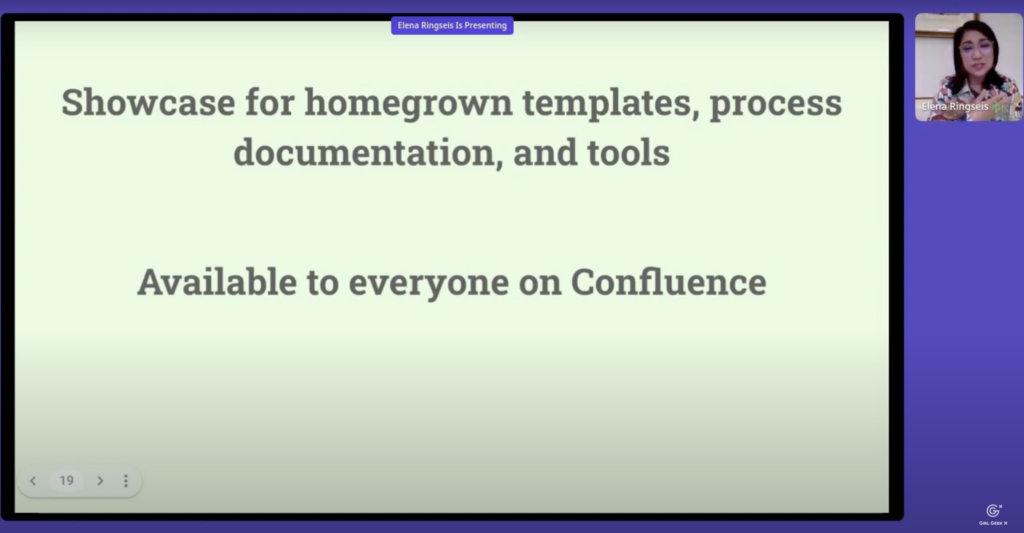
Elena Ringseis: The result there was, there’s currently over 20 examples in the library. 10 unique views per month is great for any Confluence page, I think. It’s really about amplifying ideas that are working for some to everyone. It’s a benefit of being part of a larger team, so like another way to bring us together part of something greater than our individual teams. It also gave us pride in homegrown solutions. These were resources and tools that were made within the constraints and nuances of our company. They have a, a good chance of succeeding on another team. And so it’s nice to be able to look at home first before you scour the internet for some something to help you with your problem. Was it worth the effort? This one gets three stars in the right situation. I think this is a great idea. I had already uncovered all of those tools through the assessment that I did. I think it could be a much heavier lift if you had to find all of those examples yourself. So that’s what gets three stars, but it really, it still had a big impact.
Elena Ringseis: Okay, we made it to design party day. These are actual photos from the day. It was really, really great. Hopefully some of these folks are even watching this presentation right now. This was an, an investment in our relationships aligning directly back to that relationships theme. It was a full day dedicated to team building. The first part was virtual. We got together, we split everyone into like mixed up teams. We competed in like Olympic style events such as geo guesser or there was like a hex number guessing game, and then teams collected points and, and got gold, silver, bronze at the end. And the second part of the day was local parties. We organized simultaneous local activities for folks that were comfortable getting together in person. Some of the examples were one team did mini-golf. A team did a pottery class.
Elena Ringseis: There was a catered picnic at at the beach and, and one team did go-karting. So it was really across the board. And there were also activities for folks that were remote or, or didn’t want to get together in person. They had their own second part of the day as well, we had 85% in-person participation at the local parties. That was really, really great. We celebrated in five locations. And we had 15 people from within the org help coordinate it. With the virtual part. The every local party had like two individual contributors helping to coordinate it all and figure out budget, et cetera. And then of course, memories upon memories were made that day.
Elena Ringseis: Some of the impact it had was that it gave us a chance, again, to work outside of our immediate teams. Whether, whether you were just participating or you were one of the coordinators, it gave us a chance to meet our coworkers in person for the first time or first time in a long time. And it overall, it strengthened our relationships hands down. Even for the folks that, you know, weren’t able to be in the in-person get togethers, we tried to make sure that there was geographically friendly activities for everyone. It really was an investment in the relationships that we thought it would be. And for those of us that did see each other in person, it was one of the huge perks was that it wasn’t on Zoom.
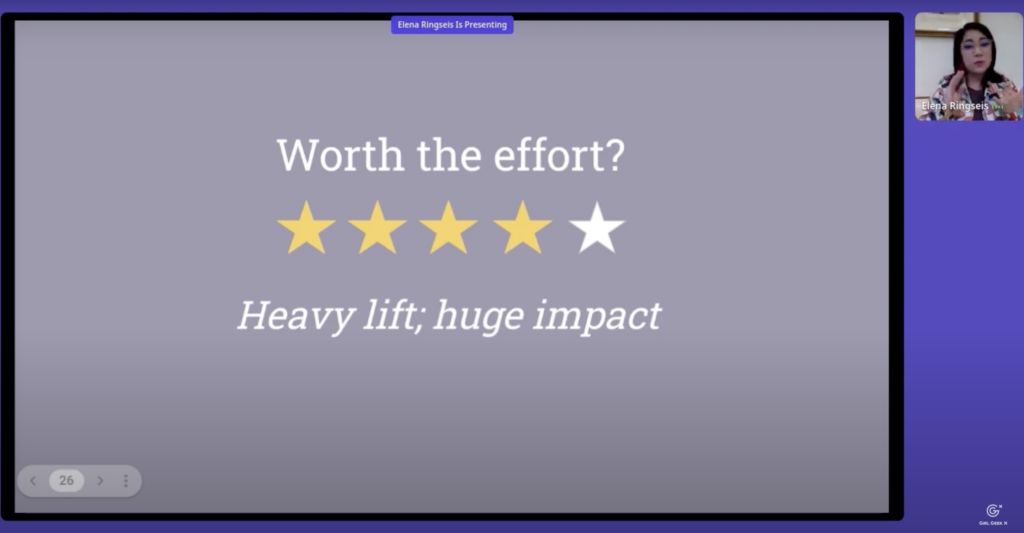
Elena Ringseis: Was it worth the effort? I gave this four. It was a really heavy lift, but it had a huge impact. There was multiple coordinators, there was budget approval, there was, you know, planning way ahead so that our partners knew we wouldn’t be working that day. But again, it, it had a lasting impact that I think folks really, really valued. Back to the timeline. In October, 2022, we took the survey again and our scores had increased by 28%. This was really encouraging and the vibe on the team, you could tell that it was a much closer knit team.
Elena Ringseis: I think I’m getting close to time. I wanted to share, you know, takeaways for you all. But then I, was thinking, okay, what did I take away from, from being part of those initiatives?
Elena Ringseis: A little listening goes a long way. The listening tour showed that we were invested, made a big impact and was pretty lightweight. Strengthening the relationships doesn’t have to be hard. All of these things kind of came out of what we were already doing. Felt like fitting puzzle pieces together and they, each one didn’t seem like a huge undertaking.
Elena Ringseis: And lastly, community happens in small gestures too. The Operations Digest it, it took me a couple months, but I realized that it was my voice in putting together those updates and my creative emoji choices. Of course, that gave people a gathering space and a place to connect, to use Erica Pisani’s term, it was “glue work”.
Elena Ringseis: These are a couple more practices. I know, Angie, you’re here. Leverage discussion prompts in different ways and try to meet live or in person wherever you can. Take a screenshot of this, connect with me. Let me know how some of these ideas worked on your teams. And then I’m gonna be at the program management table in the lounge right after this. Thank you all so much for being here.
Angie Chang: Thank you, Elena.
Like what you see here? Our mission-aligned Girl Geek X partners are hiring!
- Check out open jobs at our trusted partner companies.
- Watch all ELEVATE 2023 conference video replays!
- Does your company want to sponsor a Girl Geek Dinner? Talk to us!


